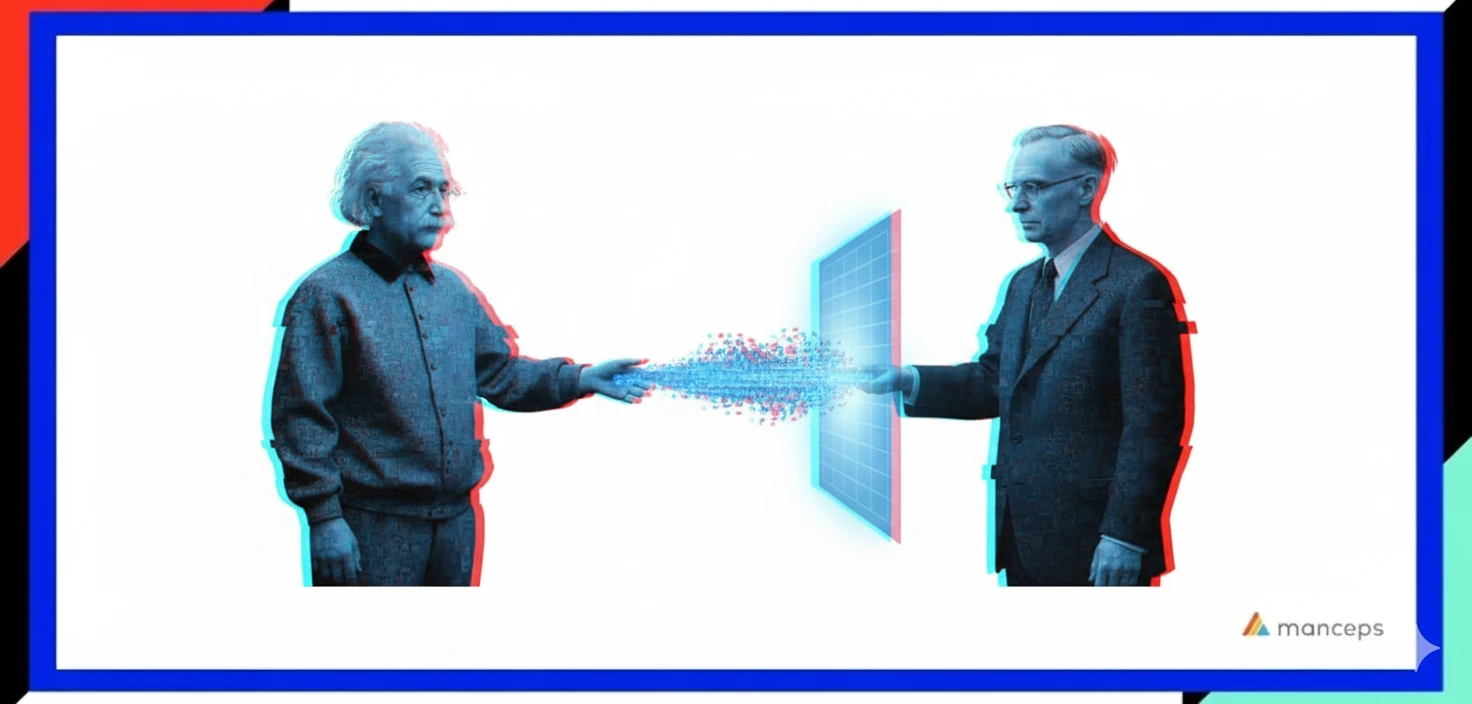It was in September 2020 when Meta AI published the paper Retrieval-Augmented Generation for Knowledge-Intensive NLP Tasks, two years before ChatGPT made its debut on November 30, 2022. At that point, we've had a fundamental trade-off in the world of large language models. You want to give your LLM specialized knowledge—say, in medicine, finance, or law—so it can actually be useful? You had two main choices, and both felt like a compromise.
On one side, you had Domain Adaptive Pre-training (DAPT). This was the "brute-force" approach. You'd take a massive model, like a GPT, and retrain it on a huge corpus of domain-specific text. The upside? The model could get really smart about its new field. The immense downside? It was mind-bogglingly expensive and prone to what researchers call "catastrophic forgetting". The model would get so good at its new job that it would start to forget its general-purpose knowledge, like basic reasoning or common sense. It's like training a brilliant lawyer who forgets how to have a conversation.
Retrieval-Augmented Generation (RAG) immediately presented itself as a remarkably more elegant solution. Instead of retraining the entire model, you'd bolt on a massive, external vector database, a kind of digital encyclopedia. When the LLM needed a piece of specific information, it would perform a lightning-fast search in the background and pull in the relevant text to inform its answer. This solved the forgetting problem, but it introduced a new one: it was slow and clunky. That expensive nearest-neighbor search had to happen on every single query, adding substantial latency and overhead. It turned the model from a sleek, integrated system into something that felt like it was constantly on hold, waiting for an external lookup to complete. It was a trade of efficiency for a different kind of inefficiency.
But a new paper introduces a third way, one that feels like a true generational leap: the Memory Decoder.
Researchers from Shanghai Jiao Tong University and Shanghai AI Laboratory developed Memory Decoder, a pretrained transformer decoder designed as a plug-and-play memory component for Large Language Models. This component internalizes domain-specific knowledge by imitating the output distributions of a non-parametric retriever, enhancing domain-specific performance and knowledge-intensive reasoning while preserving general capabilities and achieving significant parameter and inference efficiency.
This isn't just an improvement; it's a fundamental shift. The Memory Decoder is a small, pretrained transformer decoder that doesn't search an external database at all. Instead, it learns to imitate the behavior of a retriever. It's as if a brilliant research assistant spent months reading every single book in that external library, memorizing the connections and patterns, and then came back to you as a compact, lightning-fast "memory chip" that you can plug directly into your LLM.
And let me tell you, this simple idea produces some profound results.
-
It's a "Best of Both Worlds" Solution: A single Memory Decoder can be seamlessly integrated with any LLM that uses the same tokenizer, from a compact 0.5 billion parameter model all the way up to a colossal 72 billion parameter behemoth. This is the plug-and-play future we've been promised. It avoids DAPT's catastrophic forgetting and RAG's cumbersome inference latency.
-
It's Unbelievably Fast: The paper shows the Memory Decoder's inference latency is only 1.28x that of a base model, a major advantage over In-Context RAG's 1.51x and kNN-LM's 2.17x. This is crucial for real-time applications where every millisecond counts.
-
It's an Efficiency Powerhouse: The research validates the system's "140x parameter efficiency". That's not a typo. A 0.5 billion parameter model, when augmented by a Memory Decoder, was able to outperform a vanilla 72 billion parameter model. This changes the entire calculus for building and deploying specialized models.
-
It's Smarter, Not Just Faster: Beyond the performance and speed, the Memory Decoder has a certain elegance. It uses a unique hybrid training objective that allows it to learn two things at once: the specific, factual "long-tail" knowledge you’d expect from a retriever, as well as the general semantic coherence needed for a coherent conversation. It knows when to be a focused expert and when to just be a good conversationalist.
So, here's my verdict. The Memory Decoder fundamentally reimagines how we infuse specialized knowledge into large language models. It takes the key advantages of its predecessors—the deep domain knowledge of DAPT and the plug-and-play nature of RAG—and wraps them in a single, efficient, and versatile architecture that avoids their biggest pitfalls. The future of specialized AI is no longer about bolt-ons and compromises. It's about a sleek, integrated memory that just works. And that, in my book, is a giant step forward.
A Technical Deep Dive
The Memory Decoder brilliance isn't found in a single line of code, but in the meticulously designed orchestration of three distinct processes. Here is a high-level, technical blueprint of how it all works, translated into clear pseudo-code.
1. The Pre-Training Phase: Compiling Knowledge
The most novel part of the Memory Decoder is its training. Instead of learning to generate new text from scratch, it learns a fundamentally different task: how to perfectly imitate the output of a non-parametric retriever, like a k-nearest neighbor search. This is a one-time, computationally intensive process that "bakes" the retrieval logic into the model's parameters.
// Step 1: Data Preparation
// First, we create a knowledge base from our domain-specific corpus (e.g., all legal documents).
// We then pre-compute and cache the "ideal" probability distributions for every text snippet in this corpus.
// This is done by running a brute-force k-nearest neighbor (kNN) search for each snippet
// and creating a sparse probability distribution based on the top-k results.
// Step 2: Training the Memory Decoder
// The Memory Decoder is a small transformer decoder, a fraction of the size
// of the base LLM it will eventually augment. Its training objective is unique.
DEFINE a model called MemoryDecoder
INITIALIZE with a small transformer architecture
FOR each batch of data from the domain corpus:
// INPUTS:
// input_tokens: A sequence of tokens from the corpus.
// ground_truth_labels: The next token in the sequence.
// knn_distributions: The pre-computed, ideal probability distribution
// from the kNN search for this input.
// FORWARD PASS:
// Run the MemoryDecoder on the input tokens to get its raw predictions.
mem_decoder_logits = MemoryDecoder(input_tokens)
// LOSS CALCULATION (The Hybrid Objective):
// The magic happens here, combining two distinct loss functions.
// 1. Distribution Alignment Loss:
// This component forces the Memory Decoder's output to match the
// sharp, factual probabilities of the pre-computed kNN distributions.
// It uses KL Divergence to penalize the model for putting probability
// mass on the wrong tokens.
kl_loss = KL_Divergence(mem_decoder_logits, knn_distributions)
// 2. Language Modeling Loss:
// This is a standard cross-entropy loss that acts as a regularizer.
// It ensures the model maintains general linguistic fluency and
// doesn't stray too far from plausible language patterns.
lm_loss = Cross_Entropy(mem_decoder_logits, ground_truth_labels)
// Final Loss:
// A weighted sum of the two, with a tunable blending factor (beta).
loss = (beta * kl_loss) + ((1 - beta) * lm_loss)
// BACKWARD PASS:
// Use the combined loss to update the Memory Decoder's parameters.
loss.backward()
optimizer.step() 2. The Inference Phase: Plug-and-Play Augmentation
Once trained, the Memory Decoder is a self-contained, lightweight component. There is no more external database or slow searching. The "memory" is now a part of the model itself. When you need a domain-enhanced prediction, the process is simple and fast.
// The goal is to get a single, enhanced prediction for a user query.
// This is the "plug-and-play" step that makes the system so efficient.
LOAD the pre-trained, static base LLM.
LOAD the pre-trained MemoryDecoder.
// FORWARD PASS IN PARALLEL:
// Both models process the user's input at the same time.
input_text = "The launch of HMS Dreadnought in"
// Run the base LLM on the input to get its default prediction logits.
base_llm_logits = base_llm(input_text)
// Run the MemoryDecoder on the same input to get its domain-specific logits.
mem_decoder_logits = MemoryDecoder(input_text)
// INTERPOLATION:
// The final prediction is a blend of the two.
// We convert the raw predictions into probability distributions.
base_llm_probs = Softmax(base_llm_logits)
mem_decoder_probs = Softmax(mem_decoder_logits)
// The final distribution is a weighted average, using a blending factor (alpha).
// The paper found an optimal value around alpha=0.6,
// giving the Memory Decoder more influence on the final result.
final_probs = (alpha * mem_decoder_probs) + ((1 - alpha) * base_llm_probs)
// The system then generates the next token based on this new, enhanced distribution.
final_prediction = ArgMax(final_probs)
This conceptual roadmap showcases the elegance of the Memory Decoder. It sidesteps the clunky, external nature of RAG and the permanence of DAPT, offering a modular, efficient, and highly effective way to specialize a language model. The two-part training loss is the key technical innovation, allowing the model to internalize specific, factual knowledge while maintaining general-purpose reasoning. This is how a small, 0.5 billion parameter model can give a 72 billion parameter model a run for its money.








